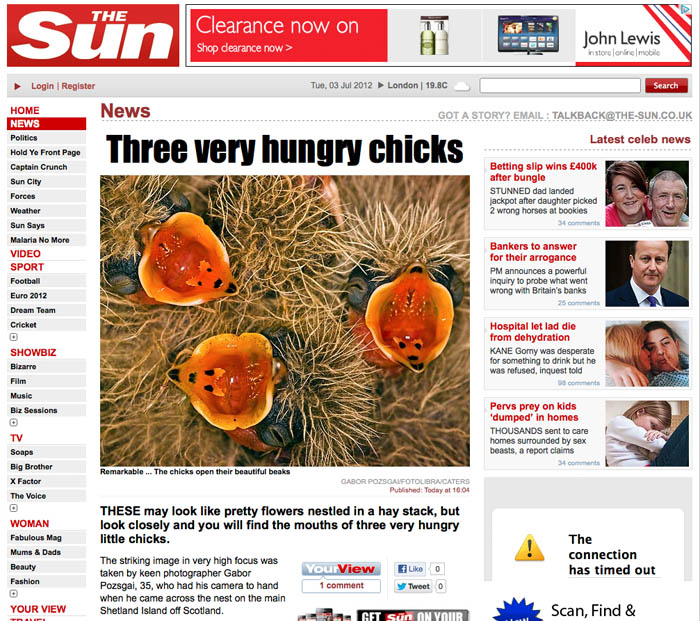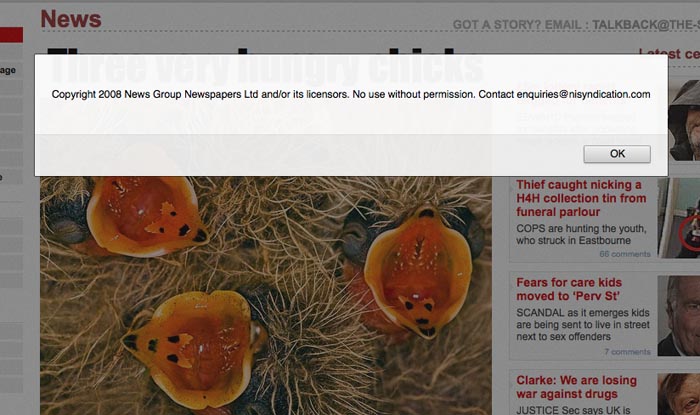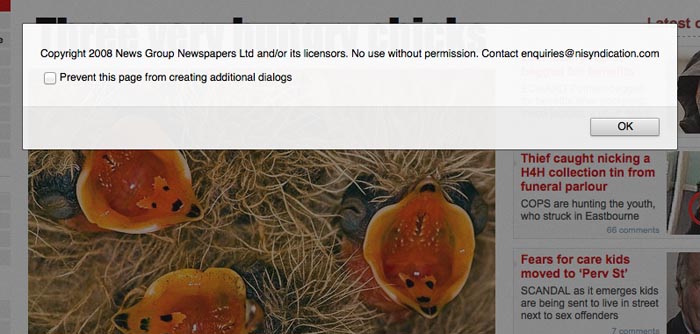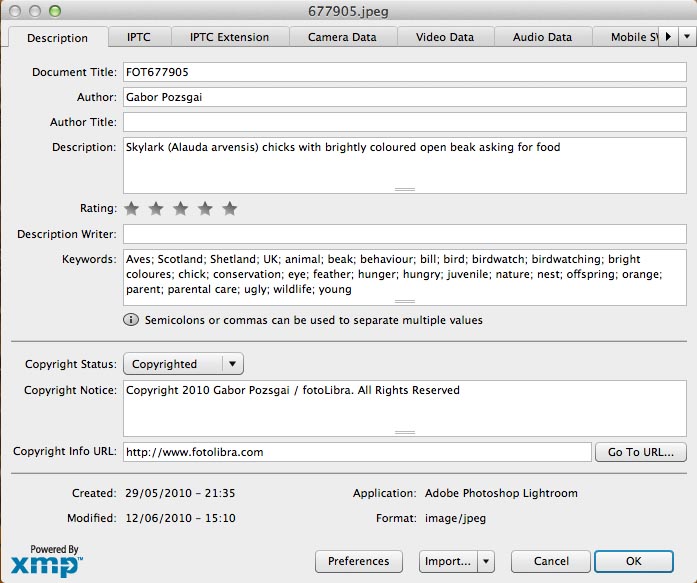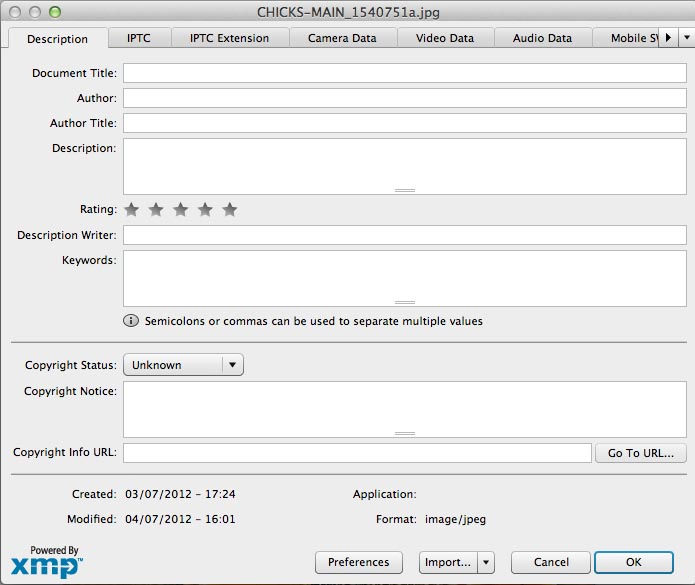Contentious VAT On Ebooks
October 28th, 2012by Gwyn Headley
Managing Director
Tags: 3G, accountants, Amazon, American, Apple, bandwidth, Berwin Leighton Paisner, BLP, British publishing industry, broadband, City, clients, digital publishing, drive prices down, ebooks, Europe, fiscal neutrality, Foyles, gilt-edged, Government, greater good, Heritage Ebooks, HMRC, illustrated ebooks, KFC, law, lawyers, losing, Luxembourg, Macdonalds, photographers, picture libraries, Printed books, pro bono, Publishers, raise prices, standard-rated, Starbucks, tax, Tesco, UK, VAT, Waterstones, zero-rated
Printed books are zero-rated for VAT in the UK. Ebooks are taxed at 20%.
Publishers have taken a softly-softly approach to VAT on ebooks, fearful that if they kick up too much of a fuss the Government will awaken to the fact that printed books are presently zero-rated and slap 20% on them overnight.
Such a move would decimate the British publishing industry — and by extension picture libraries, photographers and all the industry’s ancillary suppliers would take a huge hit. It’s therefore unlikely to happen, but who can predict what a politician may take into his head to do.
City law firm Berwin Leighton Paisner has announced on its website:
“VAT treatment of ebooks – The firm is taking a groundbreaking case challenging HMRC’s view that ebooks are standard-rated for VAT purposes, in contrast with physical books which are zero-rated.”
Hard-nosed commercial firms like BLP do not take cases on pro bono, or challenge national or international law simply for the greater good. Therefore they’re doing this for one of their clients, and that client will have deep, deep pockets.
Who can it be? Who will benefit?
Well, the consumer will benefit if prices fall by 20% (they won’t). Publishers will benefit from a boost in sales.
But by far the biggest beneficiaries will be the retailers. Apple sells ebooks. Tesco sells ebooks. They will both see a hike in profits. BLP numbers Apple and Tesco among its gilt-edged list of clients.
Our digital publishing company Heritage Ebooks sells 50 illustrated ebooks from its site for every one ebook sold by the rest of the UK’s ebook sales outlets — Waterstones, Foyles, Tescos and so on — put together.
And for every one of our ebooks that we sell from our site, Amazon will sell twelve from theirs.
It is disproportionately huge. OK, so we’re tiddlers, microbes even, but I expect the proportions are similar whatever you publish.
Amazon has been subject to much opprobrium and contumely for selling ebooks to UK customers and charging the full 20% VAT while taking advantage of the 3% VAT they pay as a company based in Luxembourg. Like Starbucks, Macdonalds and KFC, large American companies have an aversion to paying their fair share of tax in Europe, and as their lawyers and accountants are sharper than ours, they can get away with it.
And now some organisation, through BLP, is challenging HMRC’s ruling on the grounds that charging different rates of VAT on print books and ebooks breaches EU law on fiscal neutrality.
Come on, this has to be Amazon. Who else could afford such a suit? And who else would profit more?
Amazon charge us, the publisher, for the bandwidth used when a customer buys and downloads a Heritage Ebook from them. Because our ebooks are highly illustrated, they have large filesizes and therefore incur high bandwidth usage fees. And because one or two books are downloaded via 3G rather than broadband, Amazon charges us across the board at mobile phone companies’ bandwidth fees.
The result is that for two of our titles, we are losing 10p on every sale made through Amazon because of their charges. Amazon are thereby forcing us to raise our prices.
And I thought their intention was to drive prices down.
Dreams, Trains, Ideas
October 18th, 2012by Gwyn Headley
Managing Director
Tags: 1834, acoustic, battleships, Bethlehem, Bethlehem PA, Book, British, Brussels, Buchmesse, C. F. Martin, cartoonist, clearances, common heritage, concept, D-35, Dreadnought, Dreams, fotoLibra, Frankfurt am Main, frankfurt book fair, George, German, Germany, guitar rental, guitars, Ideas, image licensing, immigrant, Judea, London, long walks, luthier, Magazine article, Mary and Joseph, music shop, Nasareth, national stereotypes, Nazareth, Nazareth PA, Nazareth Pennsylvania, New York, picture library, pilgrimage, Pont, price agreements, Punch, registered, rent, rent a guitar, RENT-AN-AX dot com, rentanax.com, road trip, SOUTH AFRICA, Strat, strum, The British Character, three continents, Trains, TV series, twentieth century, USA, Wales
What can be more conducive to reverie than a good meal, a comfortable seat and a long smooth train journey?
Last Saturday I travelled from Frankfurt am Main to London, changing at Brussels, on the way back from the Frankfurt Book Fair — my 36th. It was a good fair, with plenty of top-level discussions about image licensing and clearances, price agreements and long-term contracts.
It’s been a rough old time in the picture library business but we’re hanging on in there and I am convinced I can see a silver lining here or there amongst the heavy cloud cover. A week at the Buchmesse always boosts my confidence.
There was a lot to think about on the way home. My mind ranged through meetings, proposals, promises, developments, the way forward, new ideas and so on until I fell into a light doze.
Earlier there had been a slight altercation between a Canadian and a German Muslim over seat allocation, and I fell to pondering on national stereotypes. Meanwhile my reading matter for the journey was the account books of C. F. Martin, luthier, based in Nazareth, Pennsylvania in the nineteenth century, not a page-turning thriller by most standards.*
So when I awoke there were three fresh ideas to make me smile.
Firstly, how about a series of picture books on national stereotypes? And before we all rush around tut-tutting and waving our hands in the air at such racism, it’s undeniable that a shared educational experience will produce a population that generally moves in the same direction and accepts the same discomforts. For example, most Americans are keener on owning guns than most Brits. Germans are generally more efficient than Greeks. Italians design prettier cars than the Welsh. And many of these attitudes could be illustrated by photographs — fotoLibra photographs, of course.
I suddenly remembered the pre-war Punch cartoonist Pont, and his series on The British Character. Wonderful, one-frame situation comedies, with captions such as
- Fondness for cricket
- Importance of being athletic
- Absence of enthusiasm for answering letters
- Preference for driving on the crown of the road
- Love of travelling alone
- A tendency to be hearty
- A fondness of anything French
- A tendency to learn the piano when young
You can imagine his drawings. So in my spare time I thought I’d rattle off a few observations on the national characteristics of the English, the Americans, the Spanish, the French, the Germans, the Italians and any other nation where I’ve had some experience of the inhabitants, each illustrated by a suitable fotoLibra image. If you have any suggestions for captions — and for images — please let me know. I’m looking for an affectionate and gently ironic tone. But I’m happy to offend, if it’s funny enough.
Then I contemplated Herr Martin, German immigrant to New York in 1834 and his subsequent move to Nazareth, PA, where the company he founded still makes fabulous and sought-after guitars. I discovered that Nazareth was a suburb of Bethlehem, PA and I thought that would have made Mary and Joseph’s life a little easier, having to travel 10 miles instead of 110. But there’s a Nasareth and a Bethlehem in Wales, as well — and they’re the same distance apart as the original Nazareth in Judea and Bethlehem.
There we are! How about a pilgrimage across three continents? A description of three journeys from Nazareth to Bethlehem — one in Israel / Palestine, one in Wales, one in the USA. It would be a road trip, maybe even one short and two long walks, discovering the sights to be seen and the wonders to be shared in three such different environments, all with a common heritage. TV series? Book? Magazine article? I have yet to decide. But an agreeable concept.
And then Mr Martin and his lovely guitars. I am fortunate enough to own one, a 1972 D-35 Dreadnought acoustic, named for the British battleships of the early twentieth century. When I’m away from it, my fingertips get soft and itchy, and it’s not really practical to lug it around. Why couldn’t I rent one while I was in Frankfurt so I could have a quick strum before bedtime?
Eleven years ago I spent three weeks in George, South Africa, rocking on my heels. On the second day, fearing I might go stir crazy, I found a music shop and asked the owner if he would consider renting me a guitar for three weeks. He looked at me as if I was black. Then someone renting my house in Wales asked if there was a local shop which could rent him a guitar for two weeks. There isn’t.
Why not? Don’t be silly, I told myself, there will be a giant corporation which has this sewn up. I just haven’t heard of it yet. RENT-AN-AX dot com probably has depots scattered across the world where tired businesspeople can have a Strat delivered to their hotel room when they check in. Blindingly obvious. Ah well.
I got back home, and looked up rentanax.com. No such website. So I registered it. I am now the proud owner of rentanax.com.
Now what do I do? Anyone want to start a guitar rental company?
Me, I’ve got a picture library to run.
*Fascinating nonetheless: C F Martin & His Guitars: 1796—1873, by Philip F Gura, Centerstream Publishing, Anaheim Hills 2012.
A Fairy Tale Of New York …
August 22nd, 2012by Gwyn Headley
Managing Director
… and Pennsylvania, and Indonesia …
Once upon a time (early this morning, actually) there was a photographer who came across a lovely website called fotoLibra.
“Gosh,” he thought. “If I sign up I can upload my pictures to fotoLibra and if they sell I’ll make some money.” So he uploaded two pictures for nothing.
This very same morning a nice lady in New York found the same lovely website.
“Gee willikins,” she thought. “I’ll sign up, and what I’d like to do tonight is buy a photograph of some guitar strings, for 5000 corporate CDs in Europe.”
Within minutes another nice lady in Pennsylvania also discovered fotoLibra and signed up. “Now, let me see,” she mused, “I think tonight I’ll have a photo of some guitar strings on my commercial internet site for a year. Ah! Here we are! The very thing!”
And both ladies, by fortunate happenstance, had hit upon the same photograph, uploaded by our lucky new member in Indonesia only moments before.
What joy! Two satisfied customers and one happy photographer! And they all signed up within 30 minutes of each other! The picture was uploaded and sold twice before it had been online for half an hour. Job done by fotoLibra!
But then, far away on the other side of the world, a new day dawned, and deep in her feculent pit the great JACQUI NORMAN stirred. She pointed one terrible eye at the computer screen and in an instant spotted the improbability of such transactions.
“FF RR AA UU DD !!” she bellowed slowly and heavily, shaking the sere and devastated land around her lair.
As I write, there is no happy ending. The money — a fair amount, paid by credit card — will be deposited in the fotoLibra account by close of play tomorrow. In 30 days we have to pay the photographer.
And in four or five months HSBC will slowly realise there has been a fraudulent transaction and will remove the entire amount from our account without informing us first.
So maybe we won’t be paying this gentleman from Indonesia in 30 days. We’ll just hold on to the money for a little while, and see what happens.
We could be wrong.
But we don’t think so.
Illustrated Ebooks: A View From The Coal Face
August 7th, 2012by Gwyn Headley
Managing Director
First, some housekeeping. We’ve had teething problems with an email server since last Friday. It’s fixed now, but if you’ve recently contacted fotoLibra and haven’t yet had a reply, please send your message again. Thanks, and apologies.
I was prompted to write this after reading a posting about the subject on Mike Shatzkin’s invariably thought-provoking blog. Shatzkin leans more towards pessimism than I do. But he thinks carefully, deeply and analytically before he puts fingers to keyboard and what has has to say is always worth listening to.
He pleaded “Somebody please tell me the path to survival for the illustrated book business.” He meant illustrated ebooks, of course.
OK, this is the view I’m getting from where I’m standing. I admit you can’t see very far when you’re staring at the coal face, but if our sole purpose was to make money out of illustrated ebooks in the next 12 months, a) we’d have chosen a different subject, such as porn, and b) we probably wouldn’t have started to dig the mine.
There’s no denying that the sales of Heritage Ebooks’ first 40 illustrated titles have been less than spectacular. I would go so far as to describe them as disappointing. But all publishers are optimists by nature, and what gives me hope is that having created the books, they now are sitting in virtual warehouses at no cost to us, as ready and available for sale to your device today as they will be in five years time.
It is very true that the market hasn’t yet evolved for the illustrated ebook. We are seeing sales in ones and twos. But when people have grasped the concept, they have committed themselves wholeheartedly. So far seven of our customers have ticked the two most important boxes — they are interested in the subject we’re publishing, and they are comfortable with digital reading, and as a result they have bought thirty or more ebooks from our Follies of England series. Two have purchased all forty titles.
Heritage Ebooks is constrained by geography and field of interest. If you’re not interested in follies and you don’t often get to England, then we are not your kind of epublisher — at the moment. We have more titles on other topics planned; an illustrated tour of every Spanish province, a parenting guide; but for the moment we are cornered in a niche market.
Amazon’s hegemony isn’t particularly helpful. To build market domination, they gathered low-hanging fruit in bushels — bestselling fiction. The Kindle is designed for reading plain text, not illustrated books. 16 shades of grey may have inspired a bestseller, but it’s not a turn-on for illustrated ebook publishers. The colour Kindle Fire hasn’t yet got a release date in the UK.
Nevertheless Amazon sell eleven times as many of our ebooks as all our other sales outlets, including our own heritage.co.uk website, put together. Our return from them is feeble. Our ebooks are heavily illustrated, so they have large file sizes. Amazon charges us, as publishers, for their bandwidth used when a purchaser downloads a copy of one of our ebooks. If it’s a £4.99 ebook, that can be as much as 80p per title. Remember that comes after VAT and KDP’s 30% fee has been taken off.
Our choice to publish ebooks using Epub was driven by a number of factors. Foremost was Heritage Ebooks’ position as a sister company of the picture library fotoLibra.com. Pricing images for digital use was posing problems for us as the foundations for calculating the great majority of prices — print run and image size — had been removed at a stroke. We wanted to provide a system which would work for us, for our photographers and for digital publishers. We created advanceImages, a microroyalty system with no upfront fees, so epublishers could use as many images as they liked without any cashflow worries before publication. After six months sales, the publisher submits the retailers’ sales reports and is billed a royalty on the images used. Clearly no one was going to play guinea pig, so we set up our own publishing division to demonstrate the service’s functionality. To that extent Heritage Ebooks has been a tremendous success — the system works, and works well. The first advanceImages royalty statements will be posted with the launch of fotoLibra Version 5.0, hopefully next week.
Another incentive was to display our Active Location Finder, a mapping system which displayed both the reader’s location and the precise position of the building described, a tremendous asset to any ebook guide publisher. This is simply impossible to do in a conventional printed book, and it was another spur to creating our first illustrated architectural guide books.
A third was graphical: graphics, typography, design, subjects that were embedded in me from my earliest days in publishing, suddenly became irrelevant. I find it incomprehensible that Fifty Shades of Grey can be presented in the same Caecilia font as Bring Down The Bodies, Harry Potter or this week’s Jack Reacher story. To me each font has its own unique voice, accent and point of view. Using the same font for everything you read is like listening to Churchill’s speeches being spoken by a computer.
Heritage Ebooks were created with the iPad as its preferred reading device. There was sufficient screen real estate to display images well, better in fact than in most physical books. We wanted reflowable and resizable text which would stay with the images it referred to. And although we couldn’t force readers to use our font choice of Cochin, at least we could recommend it. Then came iPad 2, and Cochin disappeared from the selection of fonts available. It has returned for iPad 3.
The future? More people will read illustrated ebooks on more devices. No, printed books will not disappear. It’s uncertain whether illustrated ebooks will take market share from illustrated books, or create a new segment. When automatic transmission was first introduced for cars in 1940 it was widely seen as the death knell for the stick shift. Yet over 70 years later in Europe, the world’s most sophisticated car market, over 80% of new car buyers choose manual transmissions. Even in America, home of the Wafter, sales of manual shifts are on the increase. Easier isn’t always better or more popular. We will have printed books alongside ebooks, which will have to have additional features (I refuse to use the word enh*nc*d) to recommend them to a separate but similar market.
Yes, the first forty Heritage Ebooks have cost us more than they have made so far. But they are out there in the marketplace, they look great, they work perfectly, and we have learned useful lessons, and we have proved the efficacy and worth of fotoLibra’s advanceImages system to the benefit of photographers and publishers alike. We’ll be publishing more. There are no remainders in this business.
Consumables, Landfill, Heirlooms
June 25th, 2012subtitled CONTENT vs DEVICES
I wish I knew what it was about the human condition that makes people like me pant after shiny things, wide aperture lenses and items with plugs.
Take ebooks. The Kindle is easily the market leader, but there are people who swear by Nook or Kobo, or who would only read ebooks on an iPad.
Now imagine that you had to make the decision that you would only read books printed by collotype. Or gravure. Or having a sulk because your partner prefers letterpress to litho.
It’s irrelevant. You know it is. I know it is. It’s the same with cameras. Once the short, bloody war between film and digital had been comprehensively won, the same old rivalry continued between the Nikon and Canon camps.
It. Doesn’t. Matter.
You can read Hilary Mantel’s Bring Up The Bodies as a book, on a Kindle, on a Nook, on an iPad, on your Android ’phone if you will.
You can admire a Colin Macpherson photograph in print, on your laptop or on your iPhone.
It. Doesn’t. Matter.
It’s whatever you feel most comfortable with. The tools used to create and convey the work are unimportant. What matters is the mind and eye that controls that tool. It’s the brain that creates the content, whether it be Wolf Hall or an Ansel Adams print.
Some artists fall in love with their tools (OK, I could have phrased that more elegantly) like Douglas Adams, who obsessed about his Apple Macs. Others will write with whatever comes to hand (this gets worse). The creator will use whatever he or she is most comfortable with, and it should be the same for the consumer. Don’t feel pressured into abandoning printed books if that’s what you like best. I’m not going to recommend reverting to film cameras, however, because whatever happens you will have to digitise that image at some point. It may as well be born digital. But how will you bear to be reading a book on an iPad One when the 12-year-old sitting next to you on the tube is perusing an iPad Three?
The device is important of course, but the method of delivery is far less important than the actual content. It is infinitely more agreeable to get to the Frankfurt Book Fair by Rolls-Royce than by bus — but the important bit is getting to Frankfurt.
When you finish A La Recherche du Temps Perdu people aren’t going to ask you whether you read it in hardback, paperback or as an ebook, though they may ask if you read it in French or in translation. When you eat a meal, you needn’t ask the cook what oven she uses, especially if you plan on using teeth to eat with in the future. Why then do people say “Lovely photograph. What camera do you use?”
It. Doesn’t. Matter.
Everything you and I buy can be placed in one of three categories:
Consumables: e.g. Food. I eat it. I buy more. Clothes. I wear them. I wear them out.
Landfill: e.g. anything with a plug. If such a remarkable device as an iPad had existed in 1979 when I bought my Mont Blanc pen for £30, it might have cost a million pounds. Today they both cost about £500. In ten years’ time my pen will be worth about £750 and I will have thrown away my iPad. All the ebooks I bought will probably be irretrievable.
Heirlooms: e.g. my pen. I write with it. I will write with it for the next 20 years. Then I will leave it to a niece. It will always be worth more than I paid for it. And the leather bound copy of Follies will be on my bookshelf when I am cold and dry.
The memories of the marvellous books I have read and the wonderful photographs I have seen will stay with me long after the tools that produced them have been consigned to the scrap heap.
Heirlooms.
Content.
Giving The Customer What He Wants
May 29th, 2012by Gwyn Headley
Managing Director
The customer doesn’t want a quarter-inch drill. He wants a quarter-inch hole.
The drill itself is merely his instrument of delivery, just as the cameras of fotoLibra photographers are theirs.
That’s the sort of insight that delights management consultants, and it does have a certain seductive logic. If you concentrate on what the customer actually wants, instead of dressing up your product to fulfill your own desires and aspirations, then the road to fortune and fame will be open to you.
That was the disruptive thinking that lay behind the concept of fotoLibra. We are neither photographers nor critics. Who were we to judge one photograph over another? It would be purely our personal taste. It would have no reference to what the market wanted.
Our solution? Let the market itself decide. In fact, we would go a step further — the market would detail what it wanted to buy, and we would tell our photographers through regular Picture Calls. How simple is that?
Then fotoLibra found itself in that awkward position between overbearing boss and nagging wife. All our photographers wanted to do was buy spiffy new lenses, and there we were hectoring them about the photographs they should be taking, not the ones they wanted to take.
Happily I hope we’ve matured a bit. We’re more relaxed about the choices our photographers make. And going back to our drill imagery, our picture buyers don’t care if the photograph has been taken with a Coastal Optics 60 mm f/4 UV-Vis-IR APO Macro or a pinhole camera, as long as it matches their imagination.
So in our regular Picture Calls we describe the “quarter-inch and other-sized cavities” our customers are looking for to our army of photographers, and with the tools at their disposal they go out and Drill Dem Holes.
And it works very well.
And because the burden of fortune and fame is not yet an intolerable weight on the shoulders of fotoLibra, we’d welcome a little more of both.
Policing Illegal Image Usage: What You Can Do
May 14th, 2012by Gwyn Headley
Managing Director
We have come across websites which are using fotoLibra images without paying for them. They are using watermarked Preview images, which anyone is at liberty to drag off the site, but not for commercial use.
I’ve borrowed the following piece in its entirety from Jacqui Norman’s May fotoLibra Newsletter because I think an important function of a picture library is not only to sell but also to guard and protect our photographers’ assets, and if we come across any unauthorised image usage it is our duty to harry and beset the perpetrators as best we can. In Britain we have the Small Claims Court which we will unhesitatingly use — overseas it’s more difficult, but there are ways and means — one of which Jacqui proposes at the end of her article.
The benefit for fotoLibra photographers is that a complaint from a company will usually carry more weight then a complaint from an individual. A company is generally perceived to have deeper pockets and better legal support than most individuals, and will usually be prepared to pursue trivial debts which a sole person may not be able to afford, in time or money.
We’re mainly talking here about image sales in the region of £25 / $40. This is not going to rescue Greece’s economy, but if our photographers are losing money through illegal usage, then so are we. We are going to do something about it — but you have to help us by following this procedure. Over to Jacqui:
fotoLibra Member Bob Crook alerted us when he found one of his images with a large fotoLibra watermark being used on somebody’s blog. He asked if we’d made the sale, and we hadn’t — the thief had simply stolen the lo-res watermarked Preview and posted it on her blog.
But Do Not Panic. Your original images are safe. They cannot be downloaded from the fotoLibra site without our knowledge. But anyone can drag Thumbnails and Previews off any website, which is why in our case they are protected with embedded metadata and, in the case of Previews, with embedded watermarks too. We don’t mind students using such images for free in dissertations and essays. If they want to use an unwatermarked version they have to pay, which of course outrages them because they think everything on the internet should be free.
If it’s not for student use, we charge. But how do you track down unauthorised usage of your images?
Here’s how Bob does it, slightly adapted to suit all fotoLibra members:
Open Google Images in one browser.
In another browser, go to your Portfolio in the fotoLibra Control Centre. Choose one of your images. Double click to enlarge it into a watermarked Preview image.
Highlight the image, and slide it onto the bar on the Google page.
It will take only a few seconds to search.
When it has finished you will see the image at the top of the page and a list underneath of where it is being used.It also attempts to show you similar images by matching the colours. Sometimes this is impressive. Sometimes it makes you realise how alien a computer’s “intelligence” can be.
If you have some curiosity and spare time, please check through some of your images this way. If you do find evidence that one or more of your images is being used without your knowledge or consent, this is what we want you to do: Email me [that’s jacqui (dot) norman (at) fotoLibra (dot) com] with a) the FOT number of your image, and b) the precise, full URL of where you saw that image being used.
We will contact the abusers and demand payment on your behalf. We can never guarantee success, particularly in overseas jurisdictions, but we can certainly frighten them, and we can name and shame them.
In fact — here’s a thought — if people don’t pay up, I might publish a regular Cheat List, where we can publicise URLs where any unpaid for fotoLibra Preview images appear, and fotoLibra members and friends can then comment on the probity and honesty (or otherwise) of the offending sites. What do you think?
Well Jacqui, I think it’s a good idea. Not a great one, because at heart I’m not confrontational, but if I sit down and think about this I can work myself up into quite a state of indignation. These people — I don’t know how many of them there are — are thieves. Bob Crook has found two, and checking through ten of my underwhelming images I have already found two which are currently being used illegally. That’s 20%. Admittedly I did choose ten images I thought might lend themselves most readily to theft. Tineye is another good way of uncovering shady image use.
I’m happy to name and shame any site which uses a fotoLibra watermarked image without permission. However I won’t rush straight in whirling my bat around my head because I’ve stepped up to the plate for young Bob before, when he claimed some publisher had used a fotoLibra image without permission. We investigated and discovered the image had been uploaded to fotoLibra three weeks after the book had been published — Bob had sold it through another picture library and had forgotten all about it. We had our ears torn off by a slider from the publisher and I don’t think we’ll be selling them any images for a while.
So we’ll tread softly. And carry a big stick.



